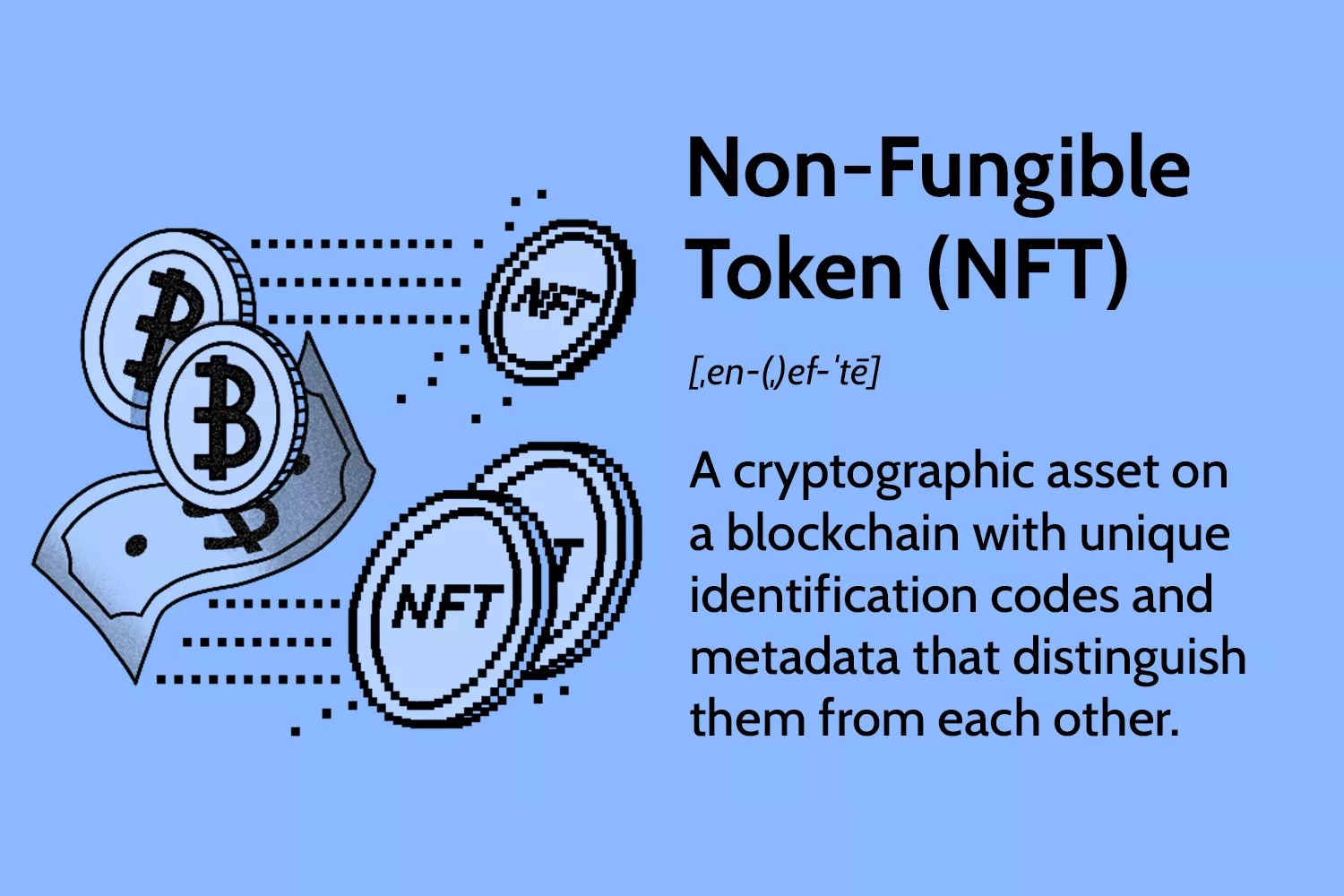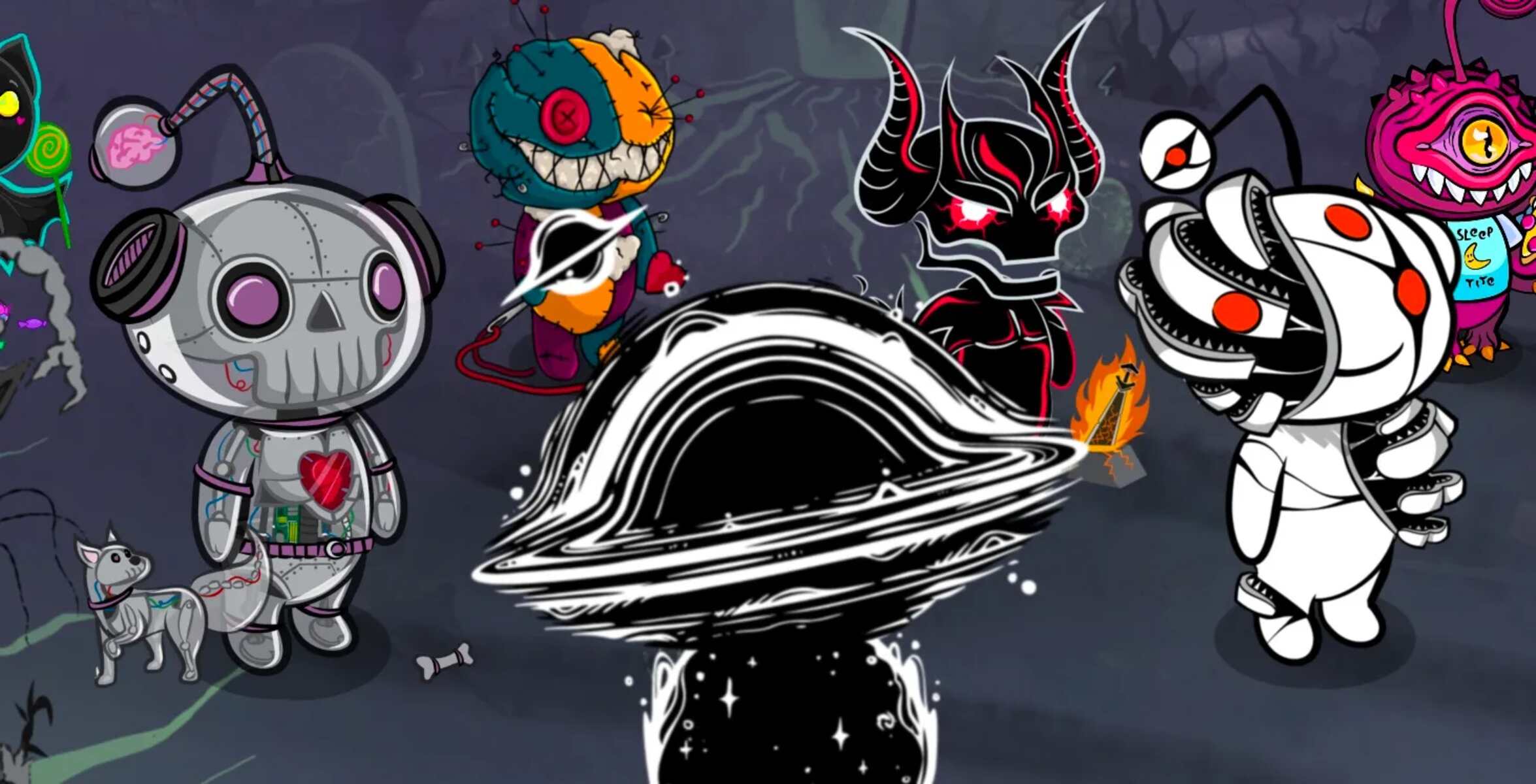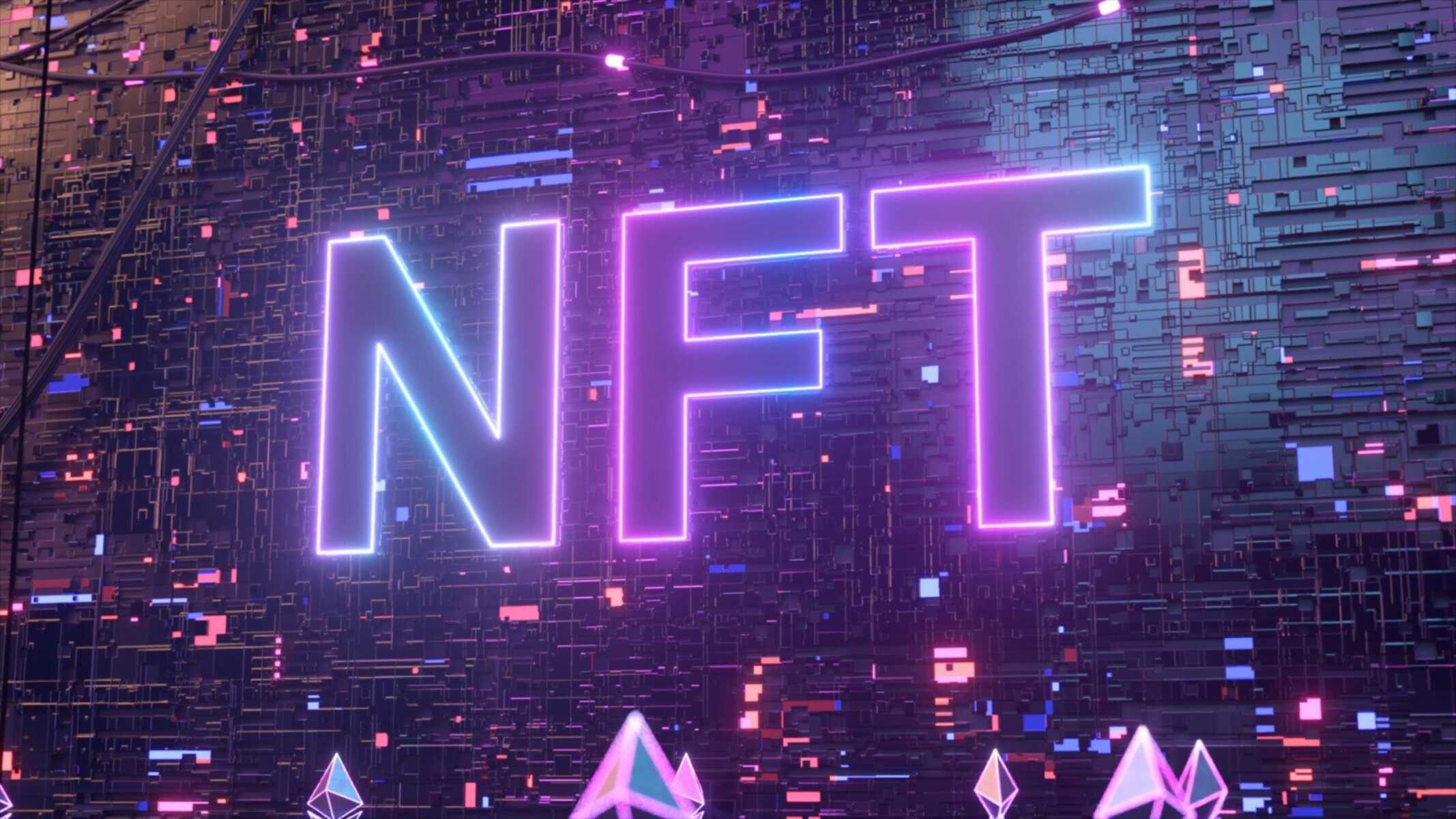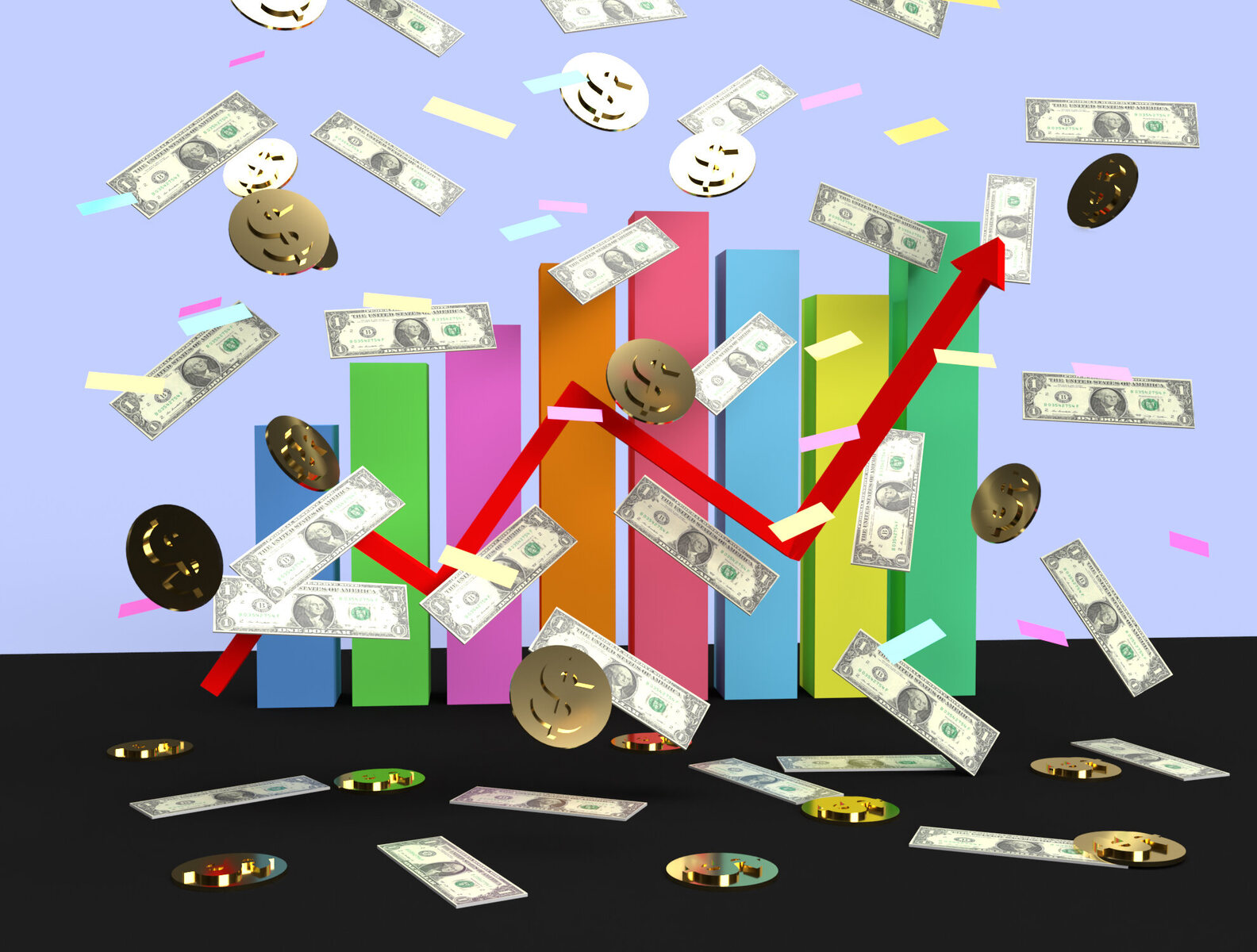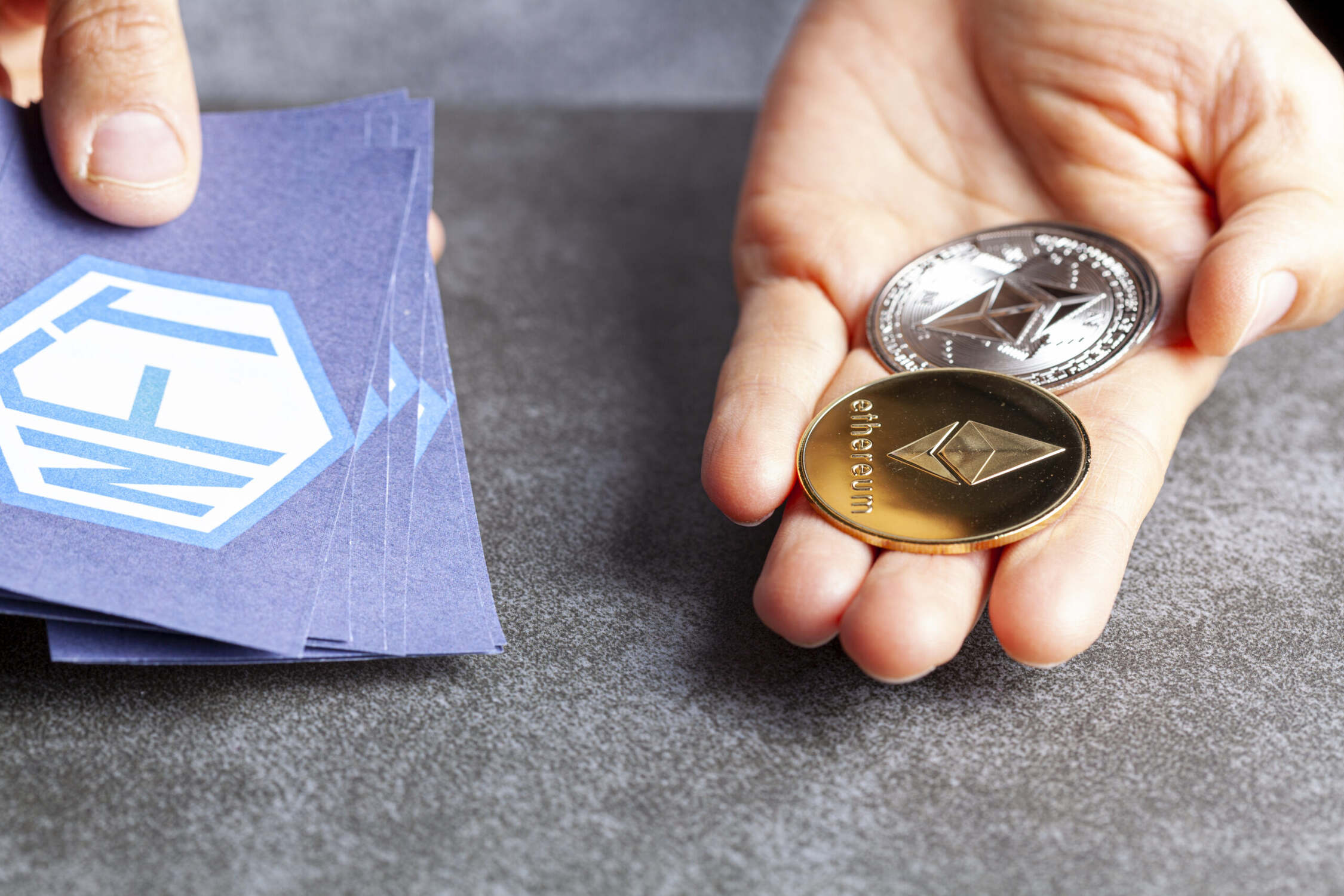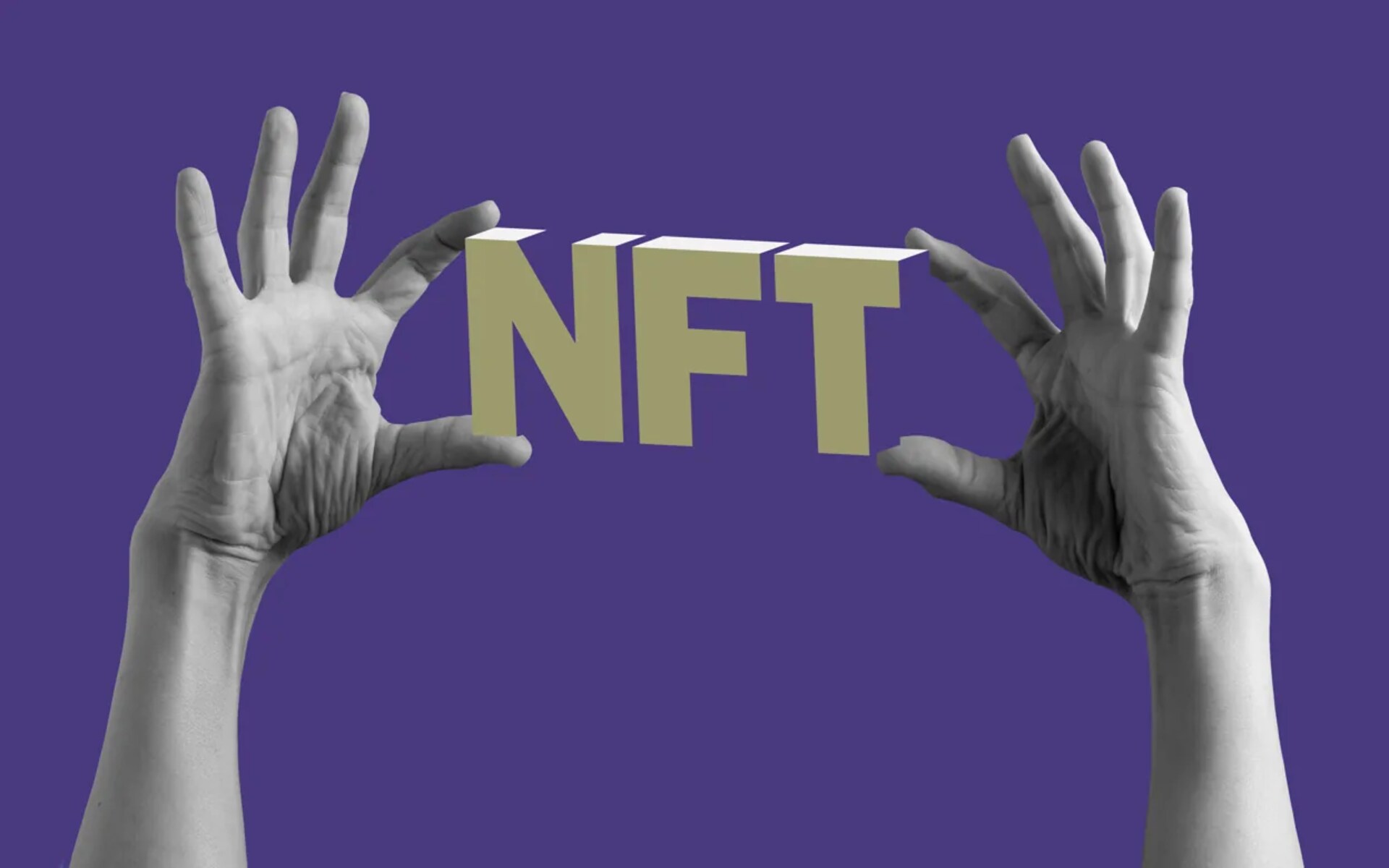Introduction
Cryptocurrency has been making waves in the financial world, revolutionizing the way we think about money and transactions. From the introduction of Bitcoin in 2009 to the rise of Ethereum and other altcoins, cryptocurrencies have gained popularity and mainstream acceptance. But now, there’s a new concept taking the crypto world by storm – Non-Fungible Tokens, or NFTs.
NFTs are a unique type of digital asset that represent ownership or proof of authenticity of a particular item, whether it’s a piece of artwork, music, video clip, or even virtual real estate. Unlike cryptocurrencies such as Bitcoin or Ethereum, which are fungible and can be exchanged on a one-to-one basis, NFTs are one-of-a-kind and cannot be duplicated or replaced.
The concept of NFTs may seem perplexing at first, but the underlying technology and the potential they hold for creators, collectors, and investors are truly game-changing. In this article, we will delve into the world of NFTs, exploring what they are, how they work, the benefits they offer, and the potential drawbacks. We’ll also examine some common use cases for NFTs and discuss famous examples that have made headlines. Finally, we’ll ponder what the future holds for NFTs and their impact on various industries.
What is a cryptocurrency?
Cryptocurrency is a digital or virtual form of currency that uses cryptography for security and operates independently of a centralized authority, like a bank. Unlike traditional fiat currencies, such as the US Dollar or Euro, which are issued and regulated by governments, cryptocurrencies are decentralized and rely on blockchain technology for validation and record-keeping.
The first and most well-known cryptocurrency is Bitcoin, introduced in 2009 by an anonymous person or group of people known as Satoshi Nakamoto. Bitcoin paved the way for the development of thousands of other cryptocurrencies, each with its own unique features and purposes.
Cryptocurrencies are based on the principles of cryptography, which involves the use of encryption techniques to secure transactions and control the creation of new units. This ensures the integrity of the currency and provides a high level of security against fraud and counterfeiting.
One of the key aspects of cryptocurrencies is their decentralized nature. Instead of being controlled by a central authority, transactions and record-keeping are distributed across a network of computers known as nodes. This decentralized approach eliminates the need for intermediaries, such as banks, and allows for faster, more secure, and cost-effective transactions.
Cryptocurrencies have gained significant popularity due to their potential for high returns on investment, as well as their ability to enable borderless transactions and financial inclusion. However, they also come with certain risks, such as price volatility and potential security vulnerabilities.
Overall, cryptocurrencies have disrupted the traditional financial system, offering a new way to store value, conduct transactions, and participate in the global economy. They have become a popular investment option and have spawned a whole new industry, with exchanges, wallets, and other supporting services catering to the growing demand.
What is an NFT?
Non-Fungible Tokens (NFTs) are a unique form of digital asset that represent ownership or proof of authenticity of a specific item. While cryptocurrencies like Bitcoin or Ethereum are fungible, meaning they can be exchanged on a one-to-one basis, NFTs are distinct and cannot be replaced or interchanged.
What sets NFTs apart is their ability to represent original or rare digital content, such as artwork, music, videos, collectibles, virtual real estate, and more. Each NFT is built on blockchain technology, typically the Ethereum blockchain, which provides a transparent and immutable record of ownership and transaction history.
Unlike physical assets or traditional digital files, NFTs are indivisible and cannot be divided into smaller units. Each NFT is a one-of-a-kind item with its own unique characteristics and attributes. This uniqueness and scarcity make NFTs highly desirable in the digital world, as they provide a sense of exclusivity and provenance.
Additionally, NFTs can incorporate smart contracts, which are self-executing agreements with predefined terms and conditions. These smart contracts enable creators to earn royalties on secondary sales of their NFTs, allowing them to receive ongoing income even after the initial sale.
NFTs have gained immense popularity in the art world, as they provide a new way for artists to sell and monetize their digital creations. Artists can mint their artwork as an NFT and sell it directly to collectors, cutting out intermediaries and creating new revenue streams.
It’s important to note that while NFTs can have significant monetary value, they don’t necessarily imply ownership of the underlying copyright or intellectual property rights. The ownership of an NFT represents a digital certificate of authenticity and provenance, rather than full control over the actual content itself.
Overall, NFTs represent a groundbreaking intersection of technology, art, and commerce, offering new possibilities for creators, collectors, and investors in the digital realm. The market for NFTs has been rapidly growing, attracting attention from artists, celebrities, and enthusiasts alike, who see the potential for innovation and disruption in various industries.
How do NFTs work?
NFTs operate on the principles of blockchain technology, which ensures transparency, security, and immutability. Most NFTs are built on the Ethereum blockchain, utilizing its smart contract functionality. Here’s a step-by-step overview of how NFTs work:
- Creation: The process of creating an NFT typically involves minting or tokenizing a digital asset. This can be done by artists, musicians, or creators using various platforms or marketplaces specifically designed for NFT creation.
- Metadata and Tokenization: When an NFT is created, it is assigned a set of metadata that provides key information about the digital asset, such as its title, description, image or video file, and properties. This information is permanently stored on the blockchain, making it publicly accessible and verifiable.
- Ownership and Blockchain Address: Each NFT is associated with a unique blockchain address, which represents ownership. This address is publicly linked to the creator’s or buyer’s wallet, providing a transparent record of ownership.
- Transactions: NFTs can be bought, sold, and traded on various NFT marketplaces or platforms. These transactions take place using cryptocurrency, typically Ethereum. The ownership of an NFT is transferred from the seller’s wallet to the buyer’s wallet through a secure and traceable blockchain transaction.
- Blockchain Validation: The Ethereum blockchain verifies and records each transaction, ensuring that the ownership of the NFT is securely transferred. This validation process eliminates the possibility of fraud or double-spending.
- Royalties: Many NFTs incorporate smart contracts, which can automatically enforce royalties. This means that creators can earn a percentage of the sale price whenever their NFT is resold in the secondary market, providing a continuous revenue stream.
It is worth noting that the energy consumption of NFTs, particularly on the Ethereum blockchain, has raised concerns regarding their environmental impact. Ethereum is in the process of transitioning to a more energy-efficient consensus mechanism called Proof of Stake, which will address these concerns in the future.
Overall, NFTs enable the digitization and monetization of unique digital assets, ensuring authenticity, provenance, and ownership in the digital realm. With the power of blockchain technology, NFTs have opened up a new world of possibilities for creators, collectors, and investors, creating a decentralized marketplace for digital content.
Benefits of NFTs
Non-Fungible Tokens (NFTs) offer a range of benefits for creators, collectors, and investors, as well as the broader digital ecosystem. Here are some key advantages of NFTs:
- Ownership and Authenticity: NFTs provide a verifiable proof of ownership and authenticity for digital assets. With the use of blockchain technology, the ownership records of NFTs are transparent and tamper-proof, removing doubts about the originality and provenance of digital creations.
- Monetization Opportunity: NFTs present a new revenue stream for creators. Artists, musicians, and other content creators can tokenize their work as NFTs and sell them directly to collectors, eliminating the need for intermediaries and opening up additional income opportunities.
- Royalties and Revenue Sharing: Through the use of smart contracts, NFT creators can earn royalties when their NFTs are resold in the secondary market. This provides an ongoing revenue stream and ensures that artists can benefit from the increasing value of their creations.
- Global Accessibility: NFTs enable borderless transactions, allowing digital content to be easily bought, sold, and traded across the globe. This opens up opportunities for creators to reach a global audience and for collectors to access unique digital assets from anywhere in the world.
- Scarcity and Exclusivity: NFTs introduce the concept of scarcity and exclusivity to the digital realm. Each NFT is unique and cannot be replicated, giving collectors a sense of exclusivity and ownership over a specific item or digital artwork.
- Interoperability: NFTs are compatible with various platforms and marketplaces, allowing for interoperability and flexibility. This means that users can buy, sell, and trade NFTs across different platforms, increasing liquidity and the potential for a vibrant secondary market.
- New Forms of Creativity: NFTs have sparked a wave of innovation and new possibilities in the digital art world. Artists are exploring new mediums, incorporating interactive elements, and experimenting with programmable NFTs, pushing the boundaries of what is possible in the digital space.
- Supporting Artists and Creators: NFTs provide direct support to artists and creators by enabling them to monetize their work. With traditional art markets often favoring established artists, NFTs offer a democratized platform where artists of all levels can showcase and sell their creations.
These benefits have contributed to the rapid growth and adoption of NFTs, attracting attention from artists, collectors, investors, and even traditional institutions. NFTs have the potential to reshape how we perceive and value digital assets, providing new opportunities for creators while revolutionizing traditional marketplaces and ownership structures.
Drawbacks of NFTs
While Non-Fungible Tokens (NFTs) offer numerous benefits, it’s important to recognize and understand some of the potential drawbacks associated with them. Here are a few key considerations:
- Environmental Impact: The high energy consumption of blockchains, particularly Ethereum, used for NFT transactions has drawn criticism. The process of validating and minting NFTs contributes to carbon emissions and raises concerns about the environmental impact of the technology.
- Market Volatility: NFT prices can be highly volatile, with values fluctuating dramatically over time. This volatility may result in significant price changes, impacting the perceived value of NFT investments and potentially leading to financial losses for buyers and collectors.
- Lack of Regulation: The NFT market is largely unregulated, which can expose buyers and sellers to risks such as fraud, counterfeit NFTs, and disputes over ownership rights. The absence of clear guidelines and standard practices can make it challenging to navigate the space and protect against potential scams.
- Accessibility and Affordability: The cost associated with minting and purchasing NFTs can be prohibitive for some artists and collectors. The high gas fees on the Ethereum blockchain, which can fluctuate depending on network congestion, may limit access to the NFT market for individuals with limited resources.
- Environmental and Social Concerns: While NFTs provide opportunities for artists to monetize their work, concerns have been raised about the impact on the broader art community. Some argue that the focus on digital assets and NFTs may divert attention and resources away from traditional art forms, potentially impacting the livelihoods of artists working in these mediums.
- Potential Bubble: The rapid growth and hype surrounding NFTs have led to concerns about the possibility of a speculative bubble. As with any emerging market, there is a risk of price speculation and market saturation, where the value of NFTs may not align with their underlying intrinsic worth.
It is important for participants in the NFT market to carefully consider these drawbacks and make informed decisions. As the NFT ecosystem continues to evolve, there is a need for increased transparency, industry standards, and sustainability measures to address these concerns and ensure the long-term viability and positive impact of NFTs.
Common use cases for NFTs
Non-Fungible Tokens (NFTs) have found numerous applications across various industries, revolutionizing how we perceive, buy, and sell digital assets. Here are some common use cases for NFTs:
- Digital Art: NFTs have gained significant traction in the digital art world, providing artists with a new way to showcase and sell their work. Artists can tokenize their digital creations, including paintings, illustrations, and animations, turning them into unique NFTs that can be bought and traded by collectors.
- Virtual Real Estate: Virtual worlds and gaming platforms have embraced NFTs, allowing users to purchase and own virtual land, properties, and in-game assets. NFTs enable players to trade and sell virtual items, creating a decentralized marketplace for virtual real estate and enhancing the gaming experience.
- Collectibles: NFTs have brought digital collectibles to the forefront, allowing users to collect and trade unique digital items. Whether it’s virtual trading cards, rare in-game items, or limited-edition digital merchandise, NFT collectibles offer a new level of scarcity, provenance, and ownership in the digital realm.
- Music and Concert Tickets: Musicians and artists have started leveraging NFTs to sell their music and concert tickets directly to fans. Through NFTs, artists can offer exclusive access to concerts, backstage passes, or special editions of albums, creating a new way for fans to support their favorite artists and connect with them.
- Domain Names: NFTs have expanded into the domain name industry, offering a new way to buy and sell digital addresses. NFT-based domain names provide ownership rights and enable unique web addresses to be bought and traded, giving individuals and businesses more control and exclusivity in the digital space.
- Virtual Identities and Avatars: NFTs are being used to create and represent virtual identities and avatars, allowing individuals to own and customize their digital personas. These NFT-based identities can be used across multiple platforms, virtual worlds, and social networks, providing a unique and recognizable presence in the digital landscape.
- Intellectual Property Protection: NFTs provide a way to protect and enforce intellectual property rights in the digital realm. Artists can tokenize their creations and establish ownership rights, making it easier to track and prove ownership, and potentially reducing copyright infringement and unauthorized use of digital content.
These use cases highlight the versatility of NFTs and their potential to disrupt traditional industries. Through the unique features of NFTs, artists, creators, gamers, and collectors are redefining the concept of ownership, value, and interaction in the digital world. As the technology continues to evolve, we can expect to see further innovative applications for NFTs in various sectors.
How to create and sell NFTs
Creating and selling Non-Fungible Tokens (NFTs) can be an exciting process that allows artists, musicians, and creators to monetize their digital work. Here is a general guide on how to create and sell NFTs:
- Educate Yourself: Before diving into the world of NFTs, it’s important to educate yourself about the technology, platforms, and marketplaces available. Research different blockchain networks that support NFTs, such as Ethereum or Binance Smart Chain, and understand their associated costs and functionalities.
- Create Your Digital Asset: Prepare your digital asset that you wish to tokenize as an NFT. This can be artwork, music, videos, or any other creative piece. Ensure that the asset is in a compatible format accepted by the chosen NFT marketplace.
- Choose an NFT Marketplace: Select a suitable NFT marketplace to list and sell your NFT. Consider factors such as platform fees, user base, and the level of exposure it provides to potential buyers. Popular NFT marketplaces include OpenSea, Rarible, and SuperRare, among others.
- Set Up a Wallet: Create a digital wallet compatible with the NFT marketplace you have chosen. This wallet will store your NFTs and enable you to interact with the marketplace and buyers. MetaMask is a popular wallet option for Ethereum-based NFTs.
- Mint Your NFT: In the chosen marketplace, follow the instructions to mint your NFT. This process involves uploading the digital asset, providing metadata such as the title, description, and image, and setting any other attributes or properties associated with the NFT.
- Set a Price and Royalties: Determine the price at which you want to sell your NFT. Additionally, if the marketplace supports royalties, such as those on the Ethereum blockchain, you can set a percentage that you will receive as revenue from future sales of the NFT.
- List Your NFT: Once your NFT is minted, list it for sale on the chosen marketplace. Provide a compelling description and visually appealing images to attract potential buyers. Consider marketing and promoting your NFT through social media and other channels to increase its visibility.
- Engage with the Community: Participate in NFT communities, engage with fellow creators and collectors, and actively promote your work. Building a network and establishing connections within the NFT ecosystem can help expand your reach and increase the chances of selling your NFTs.
- Complete the Sale: When a buyer purchases your NFT, the transaction will take place directly on the chosen marketplace. The funds will either be transferred to your wallet immediately or held in an escrow until the transaction is finalized.
- Transfer the NFT: Once the sale is complete, transfer the ownership of the NFT to the buyer’s wallet address. This process is typically initiated within the marketplace’s interface and is confirmed on the blockchain.
Remember to familiarize yourself with the specific guidelines and requirements of the chosen marketplace to ensure a smooth process. Additionally, always consider the potential costs associated with creating and selling NFTs, including gas fees for blockchain transactions and platform fees charged by the marketplace.
As the NFT market continues to evolve, staying informed about trends, connected with the community, and adapting to new developments will help maximize your success as a creator and seller of NFTs.
Famous NFT Examples
Non-Fungible Tokens (NFTs) have captured widespread attention with several high-profile examples making headlines and setting record-breaking sales in recent years. Here are a few famous NFT examples that have made a significant impact:
- CryptoPunks: Considered the original NFT, CryptoPunks are 10,000 unique 24×24 pixel art characters on the Ethereum blockchain. Each Punk has its own distinct features and attributes. These digital collectibles have gained immense popularity and value, with some rare CryptoPunks selling for millions of dollars.
- Beeple’s “Everydays: The First 5000 Days”: Digital artist Beeple’s artwork sold as an NFT for a staggering $69.3 million at auction house Christie’s. This groundbreaking sale brought NFTs into the mainstream and solidified Beeple’s position as one of the most prominent digital artists in the world.
- JPEG File by Mike Winkelmann: Another artwork by Beeple, a simple JPEG file titled “Crossroads,” was transformed into an NFT and sold for $6.6 million. This sale highlighted the potential for NFTs to assign value to digital artworks that exist solely in the virtual space.
- Nyan Cat: The popular internet meme of a flying Pop-Tart cat with a rainbow trail was transformed into an NFT and sold for approximately $590,000. This sale demonstrated the marketability of nostalgic internet culture and the willingness of collectors to invest in digital content with cultural significance.
- NBA Top Shot: Developed by Dapper Labs, NBA Top Shot is an NFT marketplace that offers digital collectible highlights of basketball plays called “moments.” These moments have attracted a large and passionate community of basketball fans who trade and collect these dynamic NFTs.
- Virtual Real Estate: In the virtual world, Decentraland has experienced notable sales of virtual land parcels. One virtual property in Decentraland’s metaverse sold for $913,000, showcasing the demand for digital real estate and the potential for virtual worlds to become immersive and lucrative platforms.
These famous NFT examples have contributed to the mainstream adoption of NFTs and have demonstrated the significant value that can be attached to digital assets. These high-profile sales have also fueled the growth and interest in NFTs across various industries, attracting artists, collectors, investors, and enthusiasts alike.
As the NFT space continues to evolve, we can expect to see more groundbreaking and influential examples that push the boundaries of what is possible in the digital realm.
The Future of NFTs
Non-Fungible Tokens (NFTs) have rapidly gained popularity and transformed the digital landscape, opening up new opportunities for creators, collectors, and investors. As the technology continues to evolve, the future of NFTs looks promising with several key trends and possibilities emerging.
1. Mainstream Integration: NFTs are likely to become more integrated into mainstream industries, such as art, music, gaming, and entertainment. We can expect to see collaborations between traditional artists and NFT platforms, major music releases as NFTs, and increased in-game economies powered by NFTs.
2. Enhanced Interactivity: NFTs have the potential to evolve from static digital assets to dynamic and interactive experiences. This could include NFTs with embedded smart contracts, enabling customizable attributes, granting access to exclusive content, or serving as virtual identities within immersive virtual worlds.
3. Increased Utility: NFTs are not limited to collectibles or digital art; they can represent ownership rights to physical assets or access to real-world experiences. We may see NFTs tokenizing real estate, luxury goods, event tickets, intellectual property rights, and more, allowing for fractional ownership and easier transferability.
4. Sustainability Measures: As concerns about the environmental impact of NFTs have grown, we can expect to see increased efforts to make the technology more sustainable. This might include transitioning to more energy-efficient blockchains, exploring proof-of-stake consensus mechanisms, and offsetting carbon emissions associated with NFT transactions.
5. Cross-Chain Compatibility: Currently, most NFTs reside on the Ethereum blockchain. However, we can anticipate the expansion of NFT ecosystems across multiple blockchains, allowing for more diverse and interoperable NFT marketplaces and reducing reliance on a single blockchain network.
6. Digital Identity and Reputation: NFTs can serve as digital passports or representations of one’s online identity. This could enable verified profiles, digital reputation systems, and tokenized achievements or credentials, further blurring the lines between the physical and digital realms.
7. Regulation and Governance: With the growing popularity of NFTs, we can expect increased scrutiny and regulatory frameworks to ensure consumer protection, intellectual property rights, and combat fraudulent activities. This may provide a more stable and secure environment for participants in the NFT market.
Overall, the future of NFTs is poised for continued growth and innovation. As technology advances, more applications and use cases will emerge, creating a vibrant and diverse ecosystem that revolutionizes how we perceive and interact with digital assets. The potential for NFTs to reshape industries, empower creators, and redefine ownership in the digital age is immense, and we are only beginning to scratch the surface of its possibilities.
Conclusion
Non-Fungible Tokens (NFTs) have emerged as a groundbreaking technology that is disrupting the way we think about ownership, value, and the digital economy. By leveraging blockchain technology, NFTs provide a secure and transparent means of tokenizing unique digital assets, ranging from artwork and music to virtual real estate and collectibles.
NFTs offer numerous benefits, such as verifiable ownership, monetization opportunities for creators, and the ability to represent scarcity and exclusivity in the digital realm. Artists, musicians, and content creators can directly connect with their audience and sell their work, while collectors can own and trade unique digital assets, creating a decentralized and dynamic marketplace for digital content.
However, the NFT space also comes with its challenges. Concerns over the environmental impact, market volatility, lack of regulation, and accessibility issues must be addressed to ensure the long-term viability and sustainability of NFTs. It is crucial for participants in the NFT market to be informed, discerning, and conscious of the potential risks and implications associated with this emerging technology.
Looking ahead, the future of NFTs holds immense possibilities. We can expect to see further integration into mainstream industries, enhanced interactivity and utility, as well as efforts to make the technology more sustainable. Additionally, cross-chain compatibility, digital identity, and governance frameworks will shape the evolution and maturation of the NFT ecosystem.
In conclusion, NFTs have revolutionized the way we perceive, create, and exchange digital assets. With an ever-expanding marketplace and growing interest from artists, collectors, investors, and enthusiasts, the impact of NFTs on the creative, economic, and technological landscape is undeniable. As the technology continues to evolve, it is essential to navigate the NFT space with caution, innovation, and a commitment to sustainability for a future where NFTs can thrive responsibly.







